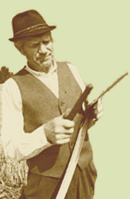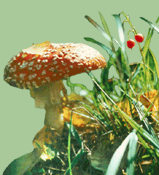Bird of the Year: Barn swallow, a witness of the changing world and changing nation
Mati Kose takes a glance at the dangerous life of the Bird of the Year. If barn swallow is in trouble, the humankind should also watch out for its own good. Barn swallow is the national bird of Estonia, as well as the heraldic bird of the Estonian Ornithological Society. The life of barn swallow is dangerous, as the little bird has to bridge very long distances on its journeys south and north, facing such threats as intensive agriculture, desertification, chemicals, loss of habitats, hunting etc. In Europe, the barn swallow is most threatened by large-scale intensive agriculture and loss of small and diverse habitats.
Barn swallow, the sweet bird
Mall Hiiemäe introduces the barn swallow in thoughts and words of folk. The folk tradition related to barn swallow is rich in Estonia as well as in neighbouring countries, referring to long-time coexistence. The barn swallow is important in folk phenology and is also known as a lucky bird. There are also numerous folktales and fairy tales involving the barn swallow.
A festive retrospect at the early years of the ornithological society
Ken Kalling reviews the birth and childhood of the jubilarian. The society was founded on May1st, 1921 in Tartu, initiated by the rector of the Tartu University of that time, Hendrik Koppel, who was a passionate bird lover. The society was founded as a compartment of the Estonian Naturalists Society. The author looks back at people and steps leading to the foundation of the society.
Mid-winter waterfowl in Estonia
Leho Luigujõe gives an overview of a popular and long-time bird count. The first mid-winter waterfowl count was carried out in 1947 in England, in early 1960ies such count was started in Estonia. Nowadays birds are counted during a mid-January weekend. In Estonia, waterfowl of 49 species have been identified, the most numerous being long-tailed duck. The counts show that Estonian waters are becoming important wintering areas for the mute swan. Several graphics and a table of all registered species and their numerousness are added to the article.
The nature protection area of the Laidu Island: an islet in the middle of a bay
Kadri Paomees concenters on a small bird protection area near the northern coast of the Saaremaa Island. The island has habitats such as alvars and coastal meadows. The island has been a very important nesting area for eider duck; however, during the last 15 years the number of nesting birds has decreased considerably.
Interview: The language of gulls can be learned in years
Juhan Javoið has interviewed Kalev Rattiste, an ornithologist
Estonian Nature enquires
Peep Lassmann writes about the essence of bird watching as a hobby.
Andres Kalamees takes a general look at the wellbeing of our birds.
The birds of years travel on letters as well
Toomas Jüriado describes the domestic bird stamps dedicated to the birds of the years as well as their origin. The first stamp with the bird of the year of Estonia the lapwing was issued in 2001. In 2003 a new artist was chosen and since then many bird stamps have been highly recognized among stamp collectors. All 10 bird stamps and some First Day Covers are printed on the pages to illustrate the story.
Spring on the bird tracks of Läänemaa
Tarvo Valker leads those interested in birds to the hiking trails and bird watch towers of the Lääne County. The Matsalu National Park is known for its extensive coastal meadows, while the most valuable habitats of the Silma Nature Protection Area are large reedbeds. In addition, it is worth to make a stop at Põõsaspea Peninsula, the best place to observe the migration of arctic waterfowl in Europe.
The dark sides of the Photohunt for birds
Villu Anvelt knocks on the conscience of nature photographers. Margus Muts, Jaanus Järva and Remo Savisaar also share their opinions. They all agree that nature photography is a delicate issue and each click should be seriously considered, especially in nesting situations and while photographing the offspring.
The intimate life of birds on cardboard
Jaanus Elts calls those interested in nature to help scientists in bird research. One such measure is the use of nest record schemes. Everyone who has found a bird nest is welcome to fill in a card. The nest record schemes help to gather information about the nesting biology of birds and related changes in time and space; to estimate the productivity of different birds and to educate people.
Poisonous mushrooms and related intoxications I.
Gyromitrin intoxication
Kuulo Kalamees warns against the poisonous brain mushroom species, especially Gyrametra esculenta, which can easily be confused with several edible mushrooms.
Tree of the Year: elm trees offer us refreshments
Urmas Kokassaar compliments the culinary qualities of the fruits, leaves and blooms of elm trees. The most common use of the tree has been the use of elm fruits in diet, and not only in periods of famine.
|


![[IN ENGLISH]](images/gb.gif)





